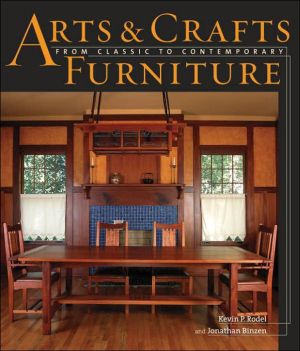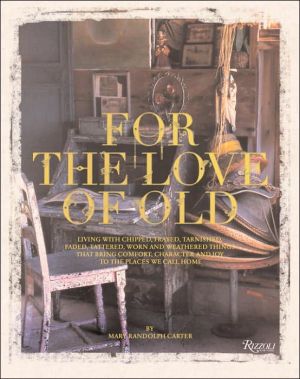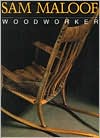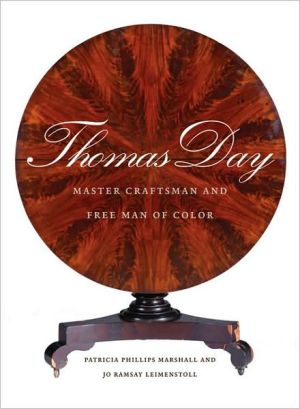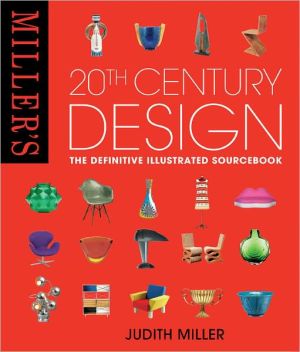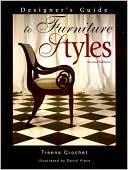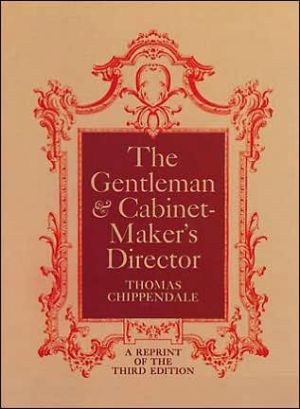Arts and Crafts Furniture: From Classic to Contemporary
Arts and Crafts is more than a style of architecture. It is an enduring furniture style that honors the tradition of fine craftsmanship and attention to detail. This book takes a fresh look at the history and influences that resulted in beautiful, functional pieces designed to enhance the interiors of classic Arts & Crafts homes. From William Morris and the roots of the movement, through Gustav Stickley, the Prairie School, and including contemporary pieces, this book celebrates the...
Search in google:
From William Morris and the roots of the Arts & Crafts movement, through Gustav Stickley, the Prairie School, and including contemporary pieces, this book celebrates the classic furniture—and the master craftsmen who made it. 500 photos.Library JournalBooks such as these make reviewing a true pleasure. The book by Cathers (Stickley Style), a lavish, comprehensive monograph on the life and, in particular, the work of an originator of the Arts & Crafts furniture design movement in the United States, is a fine, deep, and impressive exploration. Gustav Stickley had wide-ranging influence as a designer, particularly through the periodical The Craftsman. He worked with simple lines, virtually shorn of ornamentation, and the materials and craft of construction took center stage in his furniture and, later, architectural designs (most often conceived and implemented by others). Produced on heavy, glossy paper stock, with several hundred illustrations, both color and black-and-white photography, and line drawings, this work meticulously highlights Stickley's enormous contribution to design. The bibliography and index make this volume particularly useful. Arts & Crafts Furniture provides a broader context for the design movement of Stickley's time, helping readers understand fully the revolution he engendered. The volume shines in its careful delineation and exploration of the differences among designers and the different styles of the time, facilitated by textual discussions, drawings, and photographs. The definitions are clear, and examples bring many stylistic distinctions into sharper focus. Though distinctly different in focus, both volumes are celebrations of the art and work particularly well in tandem.-Alex Hartmann, INFOPHILE, Williamsport, PA Copyright 2003 Reed Business Information.
Introduction31.Furniture of the Arts and Crafts Movement4Social Reform, Design Revolution6Hallmarks of the Arts and Crafts Style11How the Movement Spread152.William Morris: The Roots of Arts and Crafts18Furnishing the Red House20Morris & Co.: A Guild Goes into Business22Gallery: The Art of Morris & Co263.Arts and Crafts in the Country: Gimson, the Barnsleys, and the Cotswolds Vernacular32London Calling34To the Cotswold Countryside35The Cotswold Legacy40Gallery: Cotswolds Country424.English Architects and Designers46A. H. Mackmurdo and the Awakening of Arts and Crafts48C. F. A. Voysey: Refined Simplicity49The Artful Interior: M. H. Baillie Scott51Liberty's and Heal & Son: Commercial Arts and Crafts in England52Gallery: England's Professional Caste565.Charles Rennie Mackintosh and the Glasgow Style62Mackintosh: Style Innovator64Mackintosh Emerges65The Glasgow Style's Other Contributors69Mackintosh on the Wane71Gallery: The Glasgow Style726.Continental Europe82Arts and Crafts in Austria84Ruskin and Morris in Deutschland87Ernst Ludwig's Legacy89Gallery: The Vienna Secession907.Gustav Stickley and His Brothers94Origins of the Style96Essence of the Craftsman Style98Stickley's Impact101Which Is the Real Stickley Furniture?103Gallery: The Stickley Family1088.Handmade in a Factory: Mass Production in Grand Rapids120The Disappearing Artisan122Mission in the Midwest122Charles P. Limbert's European Influence126Joseph McHugh's Mission Furniture131Gallery: Factory Furniture1349.The Prairie School142Arts and Crafts in the Windy City144Louis Sullivan, Mentor to the Prairie School144Frank Lloyd Wright and the Organic Ideal145George Mann Niedecken, Interior Architect149Syncopated Ornament: George Washington Maher150Prairie Partners: Purcell and Elmslie152Gallery: Prairie Arts & Crafts15410.Utopian Communities: American Furniture and Social Reform162Byrdeliffe's Aristocratic Utopia164Elbert Hubbard and the Marketing of Utopia167Rose Valley's Suburban Gothic172Gallery: Utopian Furniture17811.American Innovators186Charles Rohlfs and the Decorated Plank188John Scott Bradstreet: Fine Furniture on the Frontier191Arts and Crafts Climax: The Interiors of Greene and Greene194Gallery: Innovators in the States20012.The Revival of Arts and Crafts Furniture206The Sudden Death of Arts and Crafts208The Aftermath in England208Danish Modern: Ruskin Revved Up211The Dean of American Designer-Makers212Gallery: Arts and Crafts Revival216Selected Bibliography226Resources227Credits229Index231
\ Library JournalBooks such as these make reviewing a true pleasure. The book by Cathers (Stickley Style), a lavish, comprehensive monograph on the life and, in particular, the work of an originator of the Arts & Crafts furniture design movement in the United States, is a fine, deep, and impressive exploration. Gustav Stickley had wide-ranging influence as a designer, particularly through the periodical The Craftsman. He worked with simple lines, virtually shorn of ornamentation, and the materials and craft of construction took center stage in his furniture and, later, architectural designs (most often conceived and implemented by others). Produced on heavy, glossy paper stock, with several hundred illustrations, both color and black-and-white photography, and line drawings, this work meticulously highlights Stickley's enormous contribution to design. The bibliography and index make this volume particularly useful. Arts & Crafts Furniture provides a broader context for the design movement of Stickley's time, helping readers understand fully the revolution he engendered. The volume shines in its careful delineation and exploration of the differences among designers and the different styles of the time, facilitated by textual discussions, drawings, and photographs. The definitions are clear, and examples bring many stylistic distinctions into sharper focus. Though distinctly different in focus, both volumes are celebrations of the art and work particularly well in tandem.-Alex Hartmann, INFOPHILE, Williamsport, PA Copyright 2003 Reed Business Information.\ \
